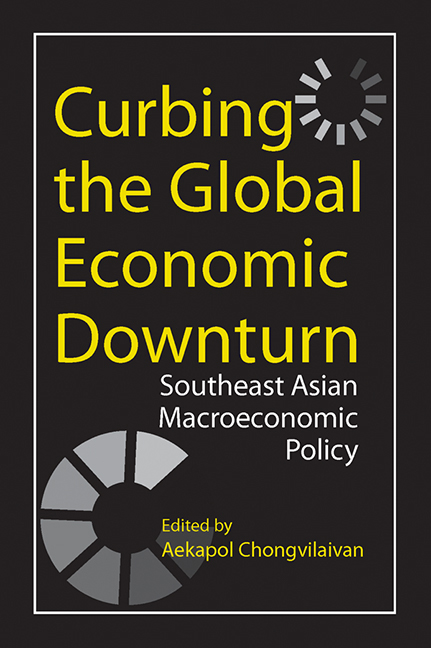Book contents
- Frontmatter
- Contents
- Acknowledgements
- Introduction
- List of Contributors
- PART I Economic Fluctuations: Macroeconomic Effects and Policy Responses
- 1 Macroeconomic Impacts of a Financial Crisis
- 2 Capital Inflow Reversals, Current Account Adjustments, and Macroeconomic Performance
- 3 Supply-Side Causes of Macroeconomic Fluctuations in a Small Open Economy
- 4 Effectiveness of Fiscal Stimuli
- 5 Public Debt Sustainability and Its Macroeconomic Impacts
- PART II Economic Co-operation in Southeast Asia
- Index
2 - Capital Inflow Reversals, Current Account Adjustments, and Macroeconomic Performance
from PART I - Economic Fluctuations: Macroeconomic Effects and Policy Responses
Published online by Cambridge University Press: 21 October 2015
- Frontmatter
- Contents
- Acknowledgements
- Introduction
- List of Contributors
- PART I Economic Fluctuations: Macroeconomic Effects and Policy Responses
- 1 Macroeconomic Impacts of a Financial Crisis
- 2 Capital Inflow Reversals, Current Account Adjustments, and Macroeconomic Performance
- 3 Supply-Side Causes of Macroeconomic Fluctuations in a Small Open Economy
- 4 Effectiveness of Fiscal Stimuli
- 5 Public Debt Sustainability and Its Macroeconomic Impacts
- PART II Economic Co-operation in Southeast Asia
- Index
Summary
INTRODUCTION
During the 1997–98 East Asian financial crisis, the affected economies experienced a massive outflow of portfolio capital. To effect the transfer of such financial resources, the current account of the balance of payments underwent a dramatic reversal within a relatively compressed time period accompanied by massive reduction in domestic spending, sharp depreciation in the real exchange rate, and upward pressure on the real interest rate. This paper studies Malaysia's experience with current account reversal following the outbreak of the financial crisis. During the period 1997–98, the economy experienced a net short-term capital outflow of RM34.6 billion, representing 6.5 per cent of nominal gross national product (GNP). In response, the current account reversed itself from a deficit that averaged 6.2 per cent of GNP during the period 1990–97 to a surplus of 13.7 per cent in 1998.
The magnitude of the current account reversal in Malaysia was the largest among the four East Asian economies that were most severely affected by the currency crisis. As Table 1 indicates, the current account in Indonesia reversed from an average deficit of 2.5 per cent of nominal gross domestic product (GDP) from 1993–97 to an average surplus of 4.6 per cent from 1998–2000, representing a reversal of 7.1 per cent. For Thailand, the switch-around in the current account amounted to 15.7 per cent of GDP. In contrast, Malaysia's external balance reversal during the same period amounted to 19.3 per cent of GDP. Such a massive turnaround in the current account, however, was accomplished with relatively less severe contraction in domestic demand. In 1998, economic activity in Malaysia contracted by 7.4 per cent compared with 13.1 per cent in Indonesia and 10.5 per cent in Thailand. Malaysia's current account reversal therefore appears to have been less painful in terms of the contraction necessary to achieve the reduction in domestic absorption to effect the transfer of resources abroad.
- Type
- Chapter
- Information
- Curbing the Global Economic DownturnSoutheast Asian Macroeconomic Policy, pp. 27 - 50Publisher: ISEAS–Yusof Ishak InstitutePrint publication year: 2010



